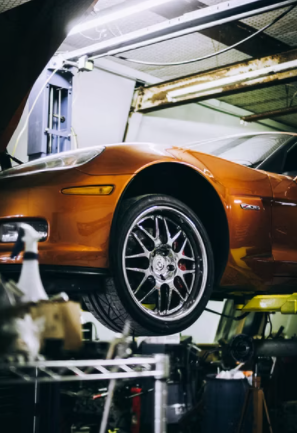Car Lifts
Consider an auto-repair shop has a hydraulic lift, with a cylindrical diameter of 0.2 m, and weighs 40 kg (piston + arms set up). If a customer has a 700 kg car, what pressure should the mechanic pump the hydraulic fluid to suspend the vehicle? Assume normal atmospheric pressure of 101 kPa.

Expand Hint
$$$Force=mass \times acceleration$$$
Hint 2
$$$Pressure=\frac{Force}{Area}+P_{atm}$$$
where
$$P_{atm}$$
is the atmospheric pressure.
Gravity is the force acting on the mass and system. Assuming the y-direction is on the axis of the piston:
$$$\sum F_y=ma\rightarrow F=(m_{arms}+m_{car})(9.81\frac{m}{s^2})$$$
where
$$F$$
is the force,
$$m$$
is the mass, and
$$a$$
is the acceleration due to gravity.
$$$F=(740kg)(9.81\frac{m}{s^2})=7259.4\:N$$$
Now, balance this force with the pressure force:
$$$F=(P-P_{atm})(Area)=7259.4N$$$
Rearranging the equation to solve for pressure:
$$$P=\frac{F}{A}+P_{atm}$$$
where area is:
$$$A=\frac{\pi d^2}{4}=\frac{\pi (0.2m)^2}{4}=0.0314m^2$$$
Thus,
$$$P=\frac{F}{A}+P_{atm}=\frac{7259.4N}{0.0314m^2}+101\:kPa=332\:kPa$$$
332 kPa
Time Analysis
See how quickly you looked at the hint, solution, and answer. This is important for making sure you will finish the FE Exam in time.- Hint: Not clicked
- Solution: Not clicked
- Answer: Not clicked